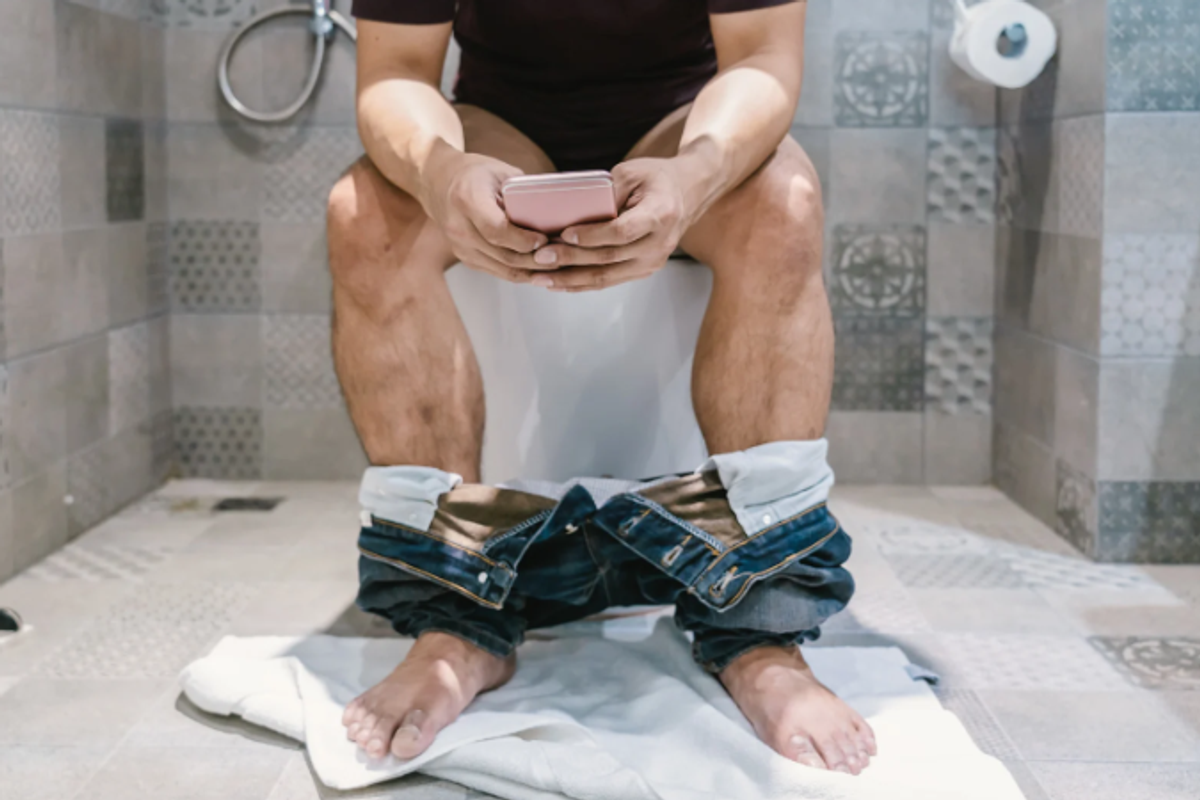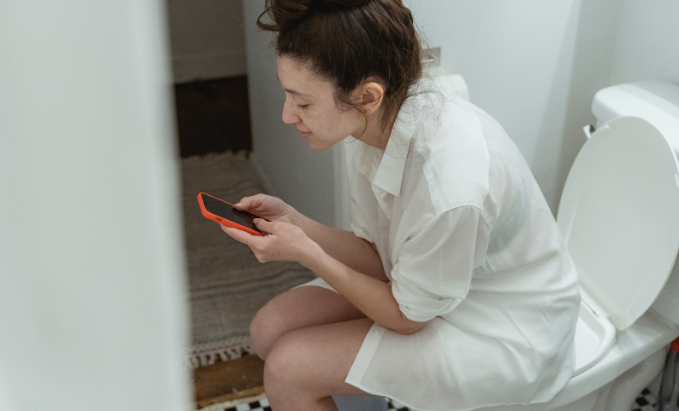In 2014, Americans spent over $360 million on pumpkin-flavored products — and that number just keeps going up.
Get ready. GIF from "The Muppets."
Granted, most people only indulge in one pumpkin-spice something per year, and half the time it doesn't even include real pumpkin in it. But love it or hate it — because when it comes to pumpkin spice, it's pretty polarizing — it's hard to deny that pumpkin is the official flavor of fall.
But back in the 16th century, early American settlers weren't exactly looking forward to the pumpkin-flavored everythings.
Native Americans relied on the ribbed orange squash in numerous ways to get them through the winter. So when the European settlers showed up, they followed suit.
Historical footage of colonial Americans settlers, upon first discovering pumpkins. GIF from TY Interwebs/YouTube.
Of course, they'd never seen pumpkins before, but pumpkins were plentiful and also full of starchy sugars, so that seemed like a win. Plus, pumpkins lasted for a long time, and when the other crops ran out, they could use them as beer or as meaty nutrients in their stews. As author Cindy Ott explained in her book, "Pumpkin: The Curious History of an American Icon," "When people had no apples for pies, barley for beer, or meat for supper, they could substitute the prolific pumpkin."
That doesn't mean that any of this pumpkin stuff was good though. Back then, without the spices that we know and love today, pumpkin was just kind of a bland way to get calories into your body.
Historical footage of colonial Americans after realizing that the bland pumpkin was pretty much their most consistent source of food. GIF from San Diego Zoo.
By the early 19th century, the pumpkin craze had become a relic of hearty American nostalgia, or so we thought.
Because pumpkins weren't very tasty, they started to go out of style. And as American prosperity grew, people began to look down on pumpkins as a "last resort" food, something their poor ancestors ate to rough it through the hard times.
But then, in the 1950s, pumpkin pie spice entered the scene.
The first known reference to pumpkin pie spice was published in The Washington Post in 1936. And shortly after World War II, the McCormick spice company began to advertise a pumpkin pie spice mixture as a kind of comfort food, offering a pre-mixed, pre-packaged combination of cinnamon, nutmeg, allspice, and ginger.
Suddenly, pumpkin's venerable frontier reputation became desirable and delicious — even though it was really the spices and not the pumpkin itself that people were diggin'. (On the bright side, those spices did offer some additional health benefits, though.)
My mother always warned me that if I ate too much of something, I was going to turn into it. GIF from "Mighty Morphin' Power Rangers."
And finally, the kicker: In 2003, the pumpkin spice latte burst onto the scene. That's when everything changed.
Basically, it's all Starbucks' fault. There were some other companies offering pumpkin spice coffees (and candles) as early as 1996, but the legendary PSL is what really kicked the trend into high gear. Starbucks was looking for another seasonal drink to compliment its popular winter holiday offerings, and although they tried several other options, there was just something about the pumpkin spice latte.
The limited availability certainly didn't hurt customer excitement. And while the PSL was an immediate hit, it really took off after the recession hit. "Pumpkin became recognized as part of the comfort food trend during the recession in 2008," said Suzy Badaracco of Culinary Tides in an interview with Vox.
Approximately 50% of the American population come August, when pumpkin spice season mysteriously smarts amid the oppressive summer heat. GIF from "It's the Great Pumpkin, Charlie Brown!"
Ott echoed this idea in her book, too. "Those ideas, about last resort and hard times and, ‘Throw the pumpkin in and take care of yourself and your family on your small plot of land,’ became symbols and stories of American survival," she wrote. "It’s these kind of associations that people are buying, and the associations are really positive and affirming."
In retrospect, it seems kind of silly that a once pervasive and annoying squash could become such a phenomenon.
When it comes to pumpkin in particular, there's also the added irony that a "flavor" that harkens back to colonial America and has such strong associations with "whiteness" actually has more to do with imported spices than with the bland squash of its namesake.
White people dancing for pumpkin flavor derived from spices taken from former British colonies. GIF from KXVO15 10:00 News/YouTube.
But this story isn't just the story of pumpkins. It's actually true for a lot of the foods we consider popular today.
For the vast majority of world history, the vast majority of people were very, very poor. The culinary treats that we recognize today were rarely delicacies; they were just what was available at a low cost to feed a lot of people.
Soups and stews like minestrone, gazpacho, and ratatouille, crops like rice and potatoes, bread and polenta, and even a lot of sausages only gained in popularity because they were the only options available, and people needed to eat.
Now, with more people rising out of poverty than ever before, these cultural touchstones of necessity are becoming commodities. Whether that's a good or bad thing is entirely up to your personal taste — kind of like that sweet Pumpkin Spice Latte.



 In a 4-day model, kids often (but not always) receive less instructional time. Photo by
In a 4-day model, kids often (but not always) receive less instructional time. Photo by 


 A woman looking at her phone on the toilet.via
A woman looking at her phone on the toilet.via  A man looking at his phone on the toilet.via
A man looking at his phone on the toilet.via 